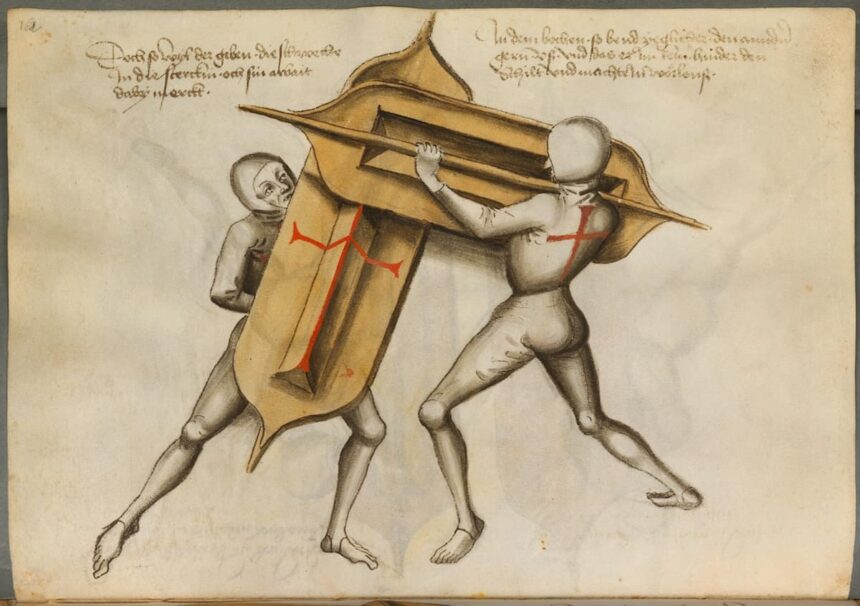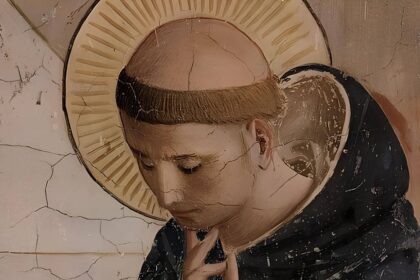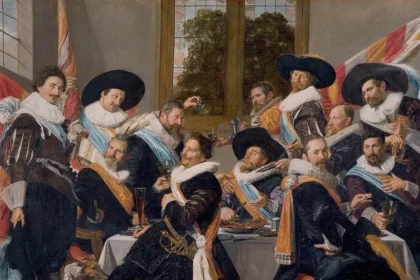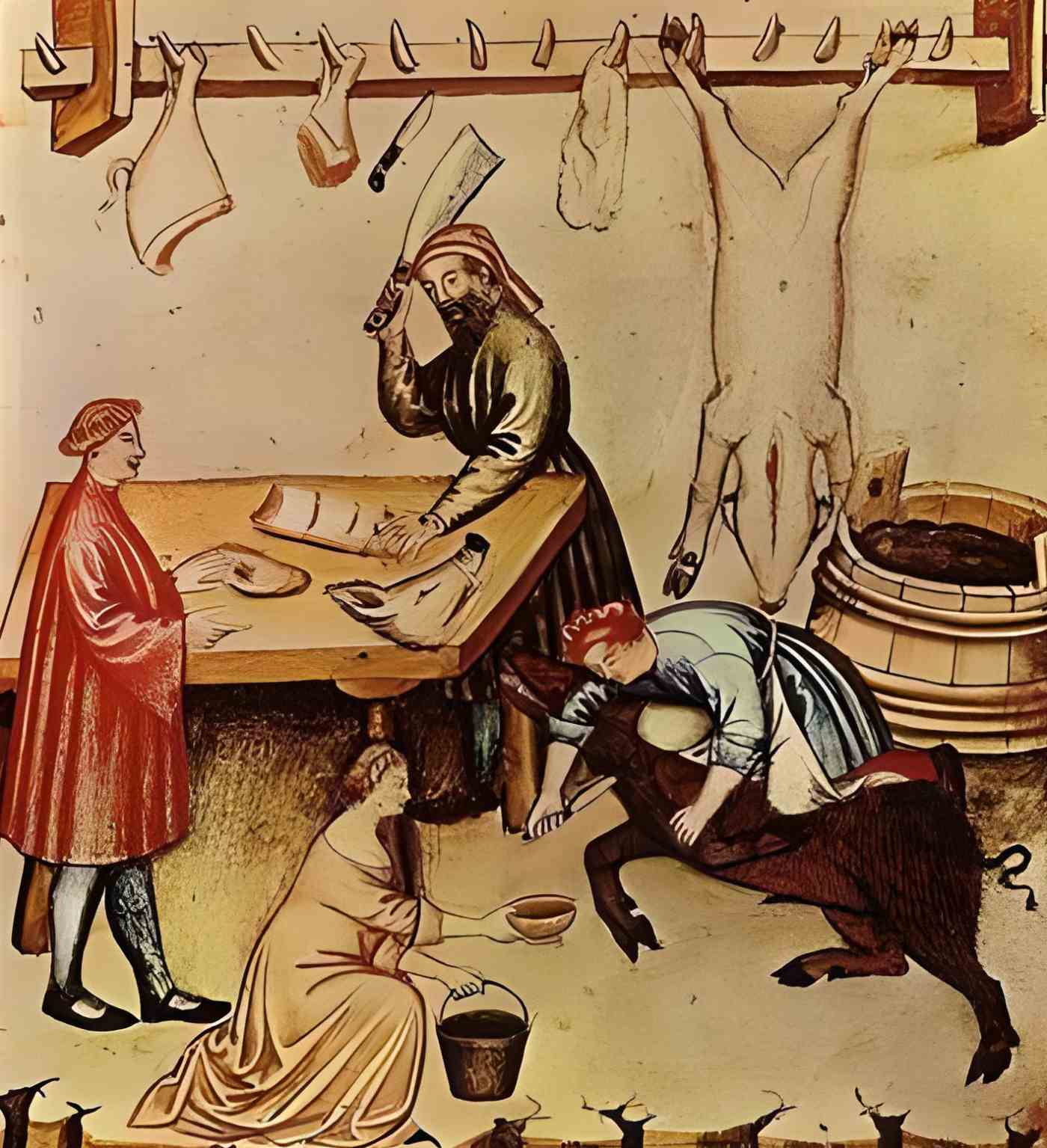Special Boards for Dates
Typically, a young man and a woman end up in bed together for intimate purposes. At least, that’s what modern people think. But in the Middle Ages, there were different views on this.
Historical records show that in Germany, Switzerland, Wales, and Scandinavia of that time, the sexuality of teenagers was restricted—strict morals, Christian values, no physical relations before marriage. Hence, courtship customs were quite strange.
Young men would lie in bed with their loved ones without undressing. They would always place a thick wooden board in the middle of the bed to maintain proper boundaries of decency. And they would sleep like that all night.
This custom was in practice up until the 17th century. It allowed a young man to subtly hint to a girl that he cared about her, but he wanted everything to be official and proper. Only after the bride’s parents approved the courtship could a marriage be arranged, and physical love made possible. Until then, it was only with clothes on and with a board in between.
Shared Beds for Kings
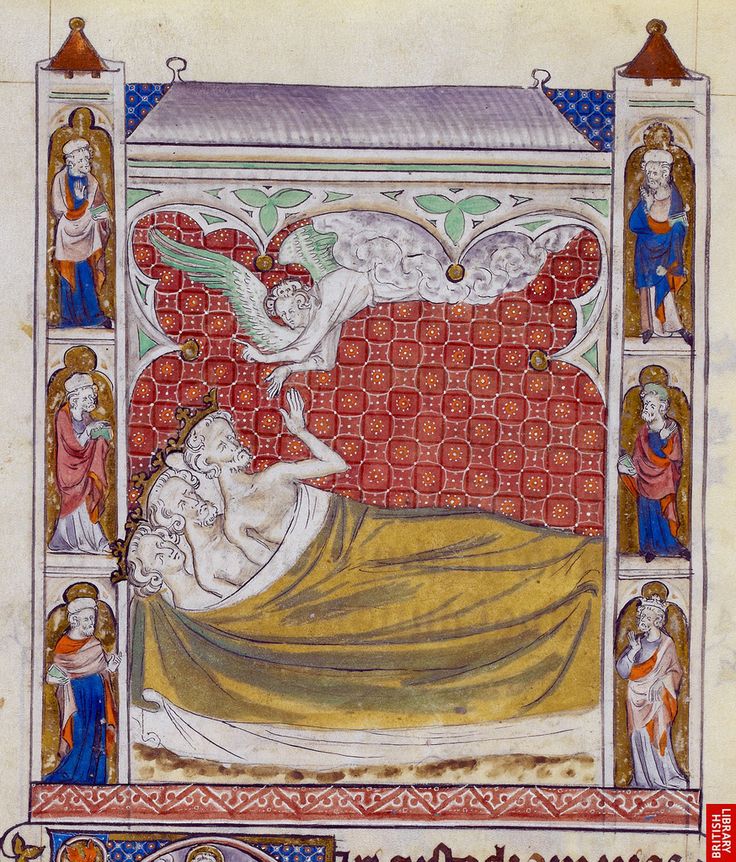
In the Middle Ages, sharing a bed was a common practice because beds were expensive, and it was costly to provide separate sleeping places for everyone.
However, even those who were not financially constrained sometimes did this. Even monarchs did not mind sharing a bed with someone else—as long as it was another person of royal blood.
Philip honoured Richard so highly that every day they ate at the same table and shared the same dishes; at night the bed did not separate them. The king of France loved him as his own soul and their mutual love was so great that the lord king of England was stupefied by its vehemence.
Chronicle of Roger of Hoveden [Source]
This fragment from the chronicle led some historians to seriously believe that King Richard I the Lionheart was not interested in women.
However, as English researchers John Gillingham and Stephen Jaeger write, for monarchs of that time, sharing a bed was not a sexual gesture but a political one. Eating from the same dish and sharing a bed with someone was a way to express friendship and affection; for carnal matters, there were mistresses.
Moreover, nobles who respected each other could exchange clothes and kiss each other on the lips in a “Brezhnev style”—not for anything inappropriate, but to establish diplomatic relations. A kind of stern royal male friendship with pajama parties.
Unusual Duels
As we have previously discussed, ordeals, or judicial duels, were a common way to administer justice in the Middle Ages. Proper forensic examination and criminal investigation had not been invented yet, so determining who was right or wrong often came down to a physical fight.
There was one catch. Medieval jurists believed that God would not allow an innocent person to lose. However, in practice, it usually turned out that God sided with people who were in good physical shape and professionally skilled with cold weapons.
Of course, one could hire a professional duelist to fight on their behalf—such knights were called “champions.” But not everyone had the means to do so.
Therefore, measures had to be taken to equalize the chances of both sides in a duel.
In the late Middle Ages, two rules were developed for duelists. First, the fighters were literally sewn into duel suits, which could not be removed independently, and were smeared with grease.
Second, they were given unfamiliar weapons. A skilled fencer would be given, instead of his usual sword, a club, a hook, or even a full-length battle door, so that his less experienced opponent had a chance to fight him on equal terms.
These fights looked comical—nothing like Ridley Scott’s film “The Last Duel.” But they were fierce and bloody and, in most cases, ended in the death of one of the participants.
Desecration of Graves
It would seem that the superstitious inhabitants of the Dark Ages should have treated the graves of their ancestors with extreme reverence. However, according to the Austrian Academy of Sciences, about 40% of burials in medieval Europe were disturbed.
In graves discovered by archaeologists in England, Switzerland, Germany, and Austria, many skeletons were found in strange positions—bound, turned face down, with twisted joints, or in unusual postures. Many were decapitated.
The reason, historians believe, is simple: medieval people were fighting zombies. Europeans were preventing the threat of undead uprising at its root. This was necessary to ensure that the restless, or revenants, whom they sincerely believed in, did not rise from their graves and harm the living.
It is quite hard to become a cool vampire when your head is lying somewhere between your knees.
However, not all deceased were considered dangerous by the inhabitants of the Middle Ages. There were also good ones. For example, in Germany, members of the Lombard tribe opened the graves of their relatives to take skulls from there as keepsakes. Thus, in the 6th-century cemetery of Brunn-am-Gebirge, out of 42 graves, a third of the heads were missing.
Apparently, the tribe members believed that the skulls of their ancestors could protect them and bring good luck. In some cases, however, they did not take the skulls away but, on the contrary, added a couple of new ones. Why this was done—archaeologists still cannot figure out.
In other parts of Europe, from Transylvania to southern England, people also often opened the graves of relatives, taking weapons and brooches from them. At the same time, they did not touch the other belongings of the deceased.
In general, in the Middle Ages, people were less concerned with the dead than they are today. Christianity preached that life after death is better than in the mortal world—not surprisingly, with the constant plague outbreaks and Viking raids. So, people regularly held gatherings, fairs, strength competitions, theatrical performances, and court trials in cemeteries.
And women of easy virtue served clients there because cemeteries belonged to the church, and individual entrepreneurs did not have to pay taxes on them.
Demonstrative Weeping
We usually imagine lords or knights as stern, stoic, and unwavering. “Men don’t cry,” and all that. But in the real Middle Ages, tears were viewed quite differently.
In classic knightly romances, we regularly encounter scenes where brave riders cry either about separation from their ladies, the death of their comrades, or the loss of their suzerain.
This is not a literary exaggeration. Chronicles of that time also report knights and aristocrats crying frequently. For example, one ambassador, who arrived at the court of Philip the Good, gave such a speech during negotiations that he not only cried himself but also moved all the courtiers present to tears.
Many men at that time “shed tears, were overcome with grief, and fainted.” Knights with tear-soaked eyes who fainted did not seem ridiculous to those around them but noble.
No one tried to hold back their tears back then—on the contrary, both men and women cried demonstratively at the slightest emotional tension.
To us, this seems strange, but at that time, tears were considered a sign of piety, a “gift from God.” Tears, according to the people of medieval Europe, brought a person closer to Christ. Crying was an essential part of the church services of that time, and the rules of monastic orders required shedding tears during prayer, preaching, and confession.
The custom of crying at every opportunity in England, for example, persisted up until the Early Modern period. In 1628, English politician Thomas Alured described the reaction of the House of Commons to a letter from the king threatening to dissolve parliament: “Sir Robert Phillips spoke and mixed his words with tears… Saint Edward Coke was forced to sit down when he began to speak through abundant tears… The Speaker of the House also could not hold back from crying…”.
Only the harsh Scandinavia managed to avoid widespread tearfulness. There, suspicion of crying was a serious insult to a man, and for it, one could easily be challenged to a duel and killed.


